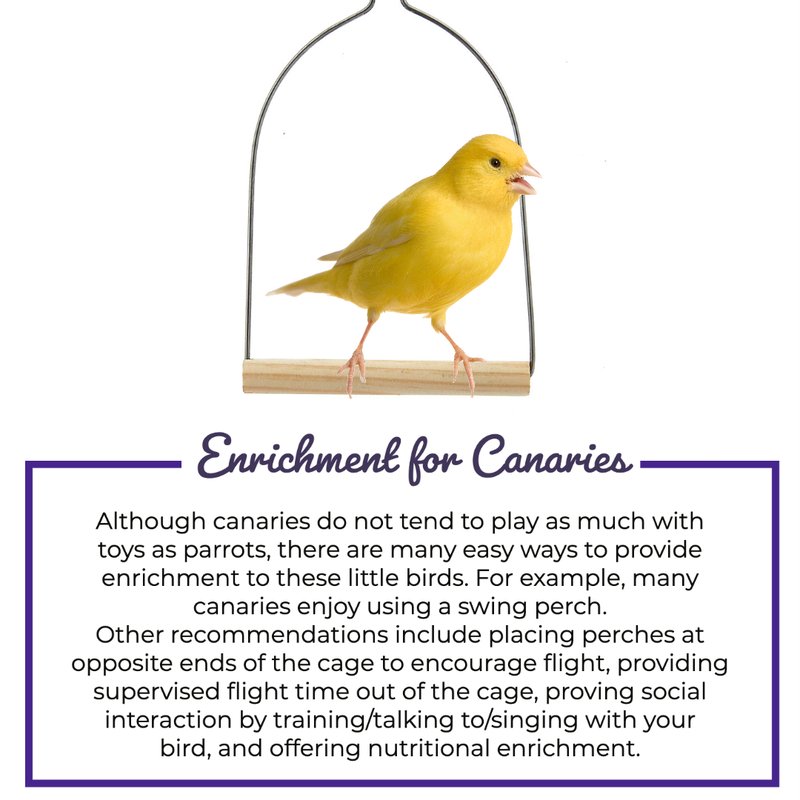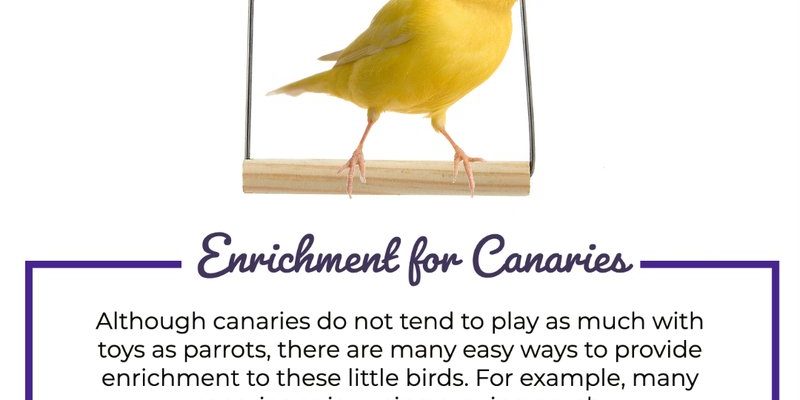
Canaries are incredibly social creatures, and just like people, their happiness often comes from engaging their minds and bodies. So, let’s dive into why they need toys and what types of enrichment you can provide to keep your feathered friend chirping with joy.
Why Enrichment Matters for Canaries
To understand the need for toys and enrichment, let’s first talk about what enrichment means for your canary. Enrichment is all about creating an environment that mimics their natural habitat. In the wild, canaries are constantly foraging for food, flying around, and interacting with other birds. Providing them with toys and activities replicates that experience.
Here’s the thing: when canaries don’t get enough mental or physical stimulation, they can become bored, stressed, or even unhealthy. You might notice signs such as excessive singing, feather plucking, or a decline in appetite. By offering various forms of enrichment, you’re not just keeping your canary entertained; you’re promoting its overall well-being.
Types of Toys for Canaries
So, what kind of toys should you get? Not all toys are created equal! Canaries enjoy various playthings that encourage different types of interaction. Here are some popular options:
- Chew Toys: These can be made from wood or safe materials that allow your canary to gnaw and keep its beak trim.
- Perches: Try to include perches of varying thickness and textures to encourage foot exercise.
- Foraging Toys: These will challenge your canary to work for its food, simulating natural foraging behavior.
- Swings: Birds love to swing! It mimics natural movement and keeps their little hearts happy.
Look for toys that are brightly colored and safe for birds. Avoid anything with toxic materials or pieces that can break off easily—safety first!
Creating an Enriching Environment
Aside from toys, the overall environment plays a huge role in your canary’s happiness. You can create an enriching space by adding different perches, hiding places, and natural elements. This can include:
- Plants: Safely introduce bird-safe plants to your canary’s cage. They provide mental stimulation and mimic a more natural habitat.
- Variety in Cage Layout: Change the arrangement of perches and toys regularly to keep things fresh and exciting.
- Natural Light: Make sure your canary has access to natural sunlight, which is vital for their mood and health.
By being a bit creative with your canary’s cage setup, you can turn it into a delightful playground that spurs exploration and play.
Impact of Social Interaction
Canaries are social beings. While they can be kept alone, having a companion can significantly boost their happiness. If you’re considering getting another canary, make sure they can get along to avoid territorial disputes.
You might wonder, how do you ensure they’re socializing enough? Mimicking flock life by talking to your canary, singing along, or even letting it hear the sounds of birds chirping can be beneficial. This interaction keeps their spirits high and engages them mentally.
Signs of Boredom in Canaries
Recognizing the signs of boredom in your canary is essential. Here are some *common behaviors* to watch for:
- Excessive Singing: While canaries are known for their songs, continuous and loud singing might indicate they’re bored.
- Feather Plucking: This can be a sign of stress and boredom. If you notice this, it’s time to mix up their environment.
- Lethargy: A lack of activity or interest in playing with toys can suggest they’re not stimulated enough.
If you spot these signs, don’t panic! Instead, take action by adding new toys or rearranging their cage to make it feel fresh and exciting.
Best Practices for Introducing New Toys
When adding new toys to your canary’s cage, take your time and observe how they react. Here are some steps to ensure a smooth introduction:
1. Introduce One at a Time: Don’t overwhelm your canary by adding multiple toys all at once. Adding one new toy at a time allows them to adjust and explore.
2. Observe Their Interest: Watch your canary closely after introducing a toy. Some birds will dive right in, while others may take time to warm up to the idea.
3. Rotate Toys Regularly: Just like humans, canaries get bored of the same toys. Rotate them out every couple of weeks to keep their playtime fresh.
4. Ensure Safety: Always check for breaks or wear and tear. Remove any damaged toys to prevent accidents.
By following these practices, you’re ensuring that your canary stays engaged and happy.
In a nutshell, toys and enrichment are essential for your canary’s happiness and well-being. By providing a variety of toys and creating an engaging environment, you’re not just making their lives more enjoyable; you’re helping them thrive. Remember that each canary has its unique personality, so what works for one might not work for another.
Investing time in understanding your feathered friend can lead to a closer bond. Just like any relationship, a little effort goes a long way. So go ahead, spruce up their cage, and get ready to enjoy the cheerful tunes from your happy little canary!

